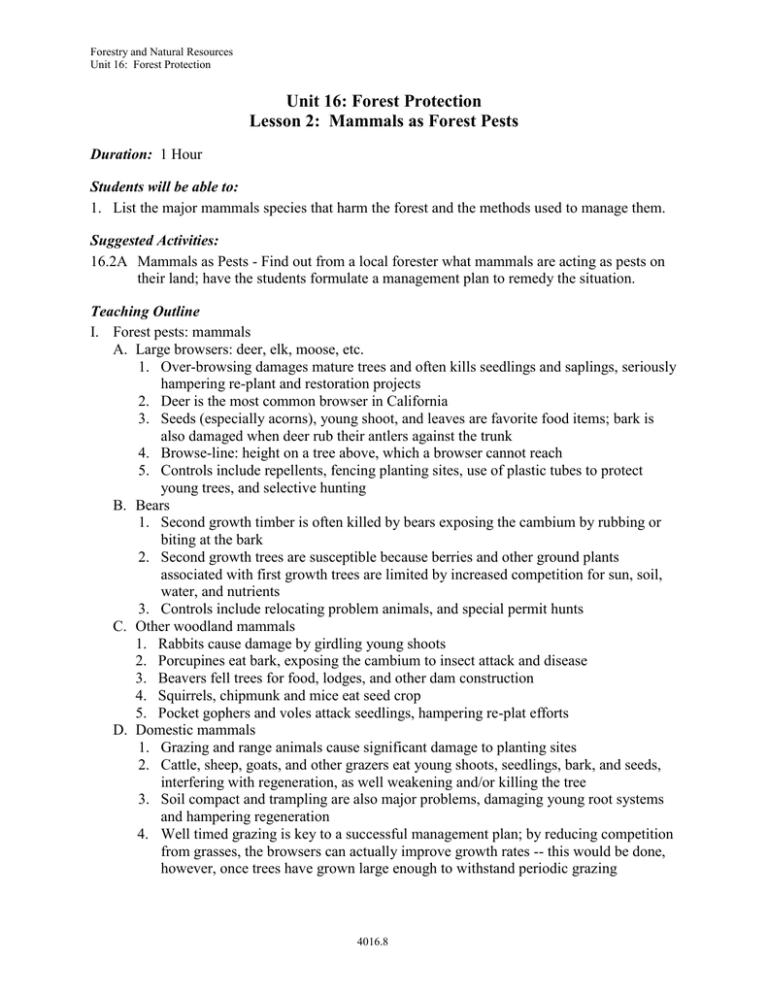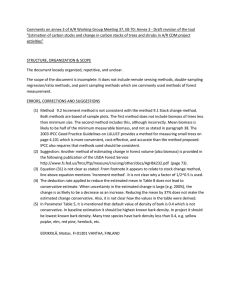Lesson 2 Mammals as Forest Pests
advertisement

Forestry and Natural Resources Unit 16: Forest Protection Unit 16: Forest Protection Lesson 2: Mammals as Forest Pests Duration: 1 Hour Students will be able to: 1. List the major mammals species that harm the forest and the methods used to manage them. Suggested Activities: 16.2A Mammals as Pests - Find out from a local forester what mammals are acting as pests on their land; have the students formulate a management plan to remedy the situation. Teaching Outline I. Forest pests: mammals A. Large browsers: deer, elk, moose, etc. 1. Over-browsing damages mature trees and often kills seedlings and saplings, seriously hampering re-plant and restoration projects 2. Deer is the most common browser in California 3. Seeds (especially acorns), young shoot, and leaves are favorite food items; bark is also damaged when deer rub their antlers against the trunk 4. Browse-line: height on a tree above, which a browser cannot reach 5. Controls include repellents, fencing planting sites, use of plastic tubes to protect young trees, and selective hunting B. Bears 1. Second growth timber is often killed by bears exposing the cambium by rubbing or biting at the bark 2. Second growth trees are susceptible because berries and other ground plants associated with first growth trees are limited by increased competition for sun, soil, water, and nutrients 3. Controls include relocating problem animals, and special permit hunts C. Other woodland mammals 1. Rabbits cause damage by girdling young shoots 2. Porcupines eat bark, exposing the cambium to insect attack and disease 3. Beavers fell trees for food, lodges, and other dam construction 4. Squirrels, chipmunk and mice eat seed crop 5. Pocket gophers and voles attack seedlings, hampering re-plat efforts D. Domestic mammals 1. Grazing and range animals cause significant damage to planting sites 2. Cattle, sheep, goats, and other grazers eat young shoots, seedlings, bark, and seeds, interfering with regeneration, as well weakening and/or killing the tree 3. Soil compact and trampling are also major problems, damaging young root systems and hampering regeneration 4. Well timed grazing is key to a successful management plan; by reducing competition from grasses, the browsers can actually improve growth rates -- this would be done, however, once trees have grown large enough to withstand periodic grazing 4016.8
